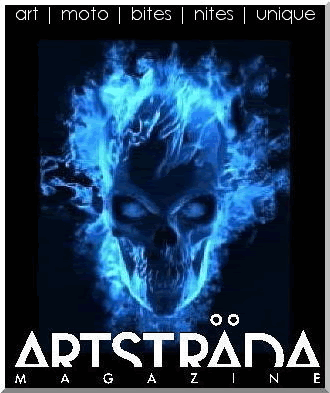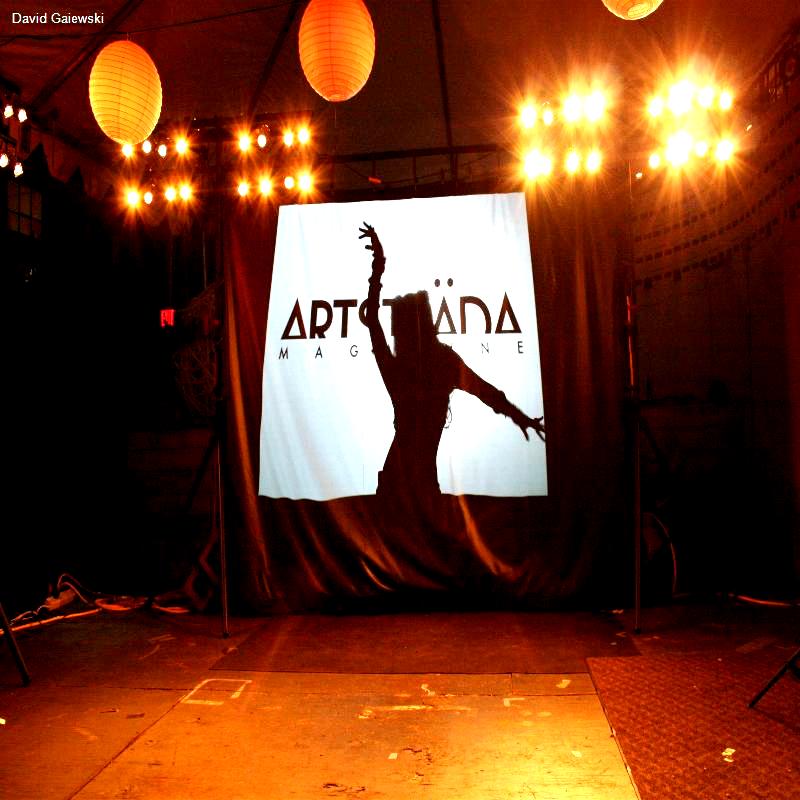Fantasia 1940 - The Sorcerer's Apprentice
Film presentation
Poster for the original release of Fantasia.
Walt Disney intended Fantasia to be more than just a film. It was to be an event, complete with reserved seating and fancy dress. Special program books were prepared for the film, featuring production artwork and photographs, dedications by both Walt and Stokowski, and the credits and synopsis for each segment. Each theater was rigged with 30 or more speakers, all lined around the perimeter of the ceiling, to provide the full Fantasound experience. The format of the film follows that of a concert rather than a motion picture. Besides the Deems Taylor narration passages, a proper presentation of Fantasia features a 15-minute intermission, which falls between The Rite of Spring and the Meet the Soundtrack segment.
Unusual for an American animated film (or any film of that time for that matter), Fantasia had no opening or closing credits in its original version. The film opens with curtains parting to reveal the orchestra entering and taking their places. During the film's intermission, a solitary title card was to be played over the movie theater's closed curtain, reading:
Fantasia.
Copyright MCMXL Walt Disney Productions (Inc.). In Technicolor. Approved MPPDA Certificate No.5920. RCA Sound System.
When RKO assumed distribution of Fantasia in 1941, the RKO logo was added to the intermission card.
For the film's 1946 rerelease, and for all later theatrical releases, the title card seen during the intermission was transferred to the very beginning of the film (in regular main title fashion), but no other credits appeared. This was the way the film was shown until 1990, when closing credits, listing the entire technical staff and those involved with the 1990 restoration, were added to the end of the film. These credits were shown against a background of the orchestra exiting, using footage taken from the "intermission" segment, which had not been seen since its original 1940 release.
Release history
1940
Fantasia was originally released in 1940 by Walt Disney Productions itself as a roadshow release, since Disney's distributor RKO Radio Pictures backed out of the film. Its first playdate, the film's premiere, was in New York City on November 13, 1940. The final scene to be shot (the long multiplane pan in the Ave Maria sequence) was completed, developed, printed, and rushed via airplane to New York that same day, where it was spliced into the film a mere four hours before showtime. Primarily because of the amount of audio equipment required and the time necessary to make the installation, the full-length Fantasound version of Fantasia was only shown at 12 theatres, and only 16 Fantasound-equipped prints were ever made. This, coupled with Fantasia's extremely large budget, meant that the film was unable to turn a profit during its initial release.[17]
1941
Starting with the January 29, 1941 play date in Los Angeles, California, RKO assumed distribution of Fantasia. They had the film's soundtrack remixed into monophonic sound, to make it easier to distribute, and added their logos to the film's solitary title card.
In late 1941, RKO had the 125-minute Fantasia edited down to 81 minutes (done by deleting the entire Toccata and Fugue in D Minor segment and shortening the live-action Deems Taylor sequences as much as possible). This version of the film was released nationwide on January 6, 1942 — the first time Fantasia was given a wide release — with the tagline "Fantasia Will Amaze Ya!" With a world war now looming, the edited film didn't capture large enough audiences to become profitable and it quickly disappeared from the screen. The financial failure of Fantasia left the Disney studio in difficult financial straits, and made it necessary to quickly produce a relatively low-budget feature, Dumbo, as their next project.[4]
According to Time magazine, the film was popular with audiences that saw it, and also boosted the classical music industry.[18] However, most sources cite the film as Disney's first great box-office failure, and commentators such as Leonard Maltin blame its initial failure on the public's unwillingness to accept Disney as a popularizer of classical music.
1946
Fantasia was revised once again in 1946, restoring Toccata and Fugue, but still keeping the Deems Taylor sequences to a minimum. This is the version most familiar to the public and the version most future releases of Fantasia would be based upon, and is therefore called the "General Release Version". It retains all of the animation from the original, but omits portions of the live action.
1956
Stereo sound was restored to Fantasia in 1956, when it was released in CinemaScope-compatible SuperScope. Only one operating Fantasound setup, and one Fantasound-equipped print, had survived by this time; the sound negatives were stored on nitrate film and had already deteriorated.[19] The output from the four-track Fantasound system was transferred via high-quality telephone lines to an RCA facility and recorded onto magnetic tape. The magnetic recording was mixed to create a new final four-channel stereo mix for the widescreen release.[19] The film was projected in various aspect ratios by actually changing the anamorphic properties of the lens on the fly by using the fourth sound track as a control track, much like the original control track was used to redirect the sound in the 1940 release.[20]
1969
Fantasia did not make a profit until its 1969 rerelease. By then, Fantasia had become immensely popular among teenagers and college students, some of whom would reportedly take drugs such as marijuana and LSD to "better experience" the film.[4] Disney promoted the film using a psychedelic-styled poster. The rerelease was a major success, especially with the psychedelic young adult crowd, many of whom would come lie down in the front row of the theater and experience the film from there.
The film was once again edited for the 1969 release, this time to remove the character Sunflower, a centaur depicted as an African-American girl in the Pastoral Symphony segment. According to the Memory Hole, "Performing menial duties for the blonde, white female centaurs, Sunflower is a racial stereotype along the lines of Amos and Andy, Buckwheat, and Aunt Jemima."[21]
1982
For its 1982 reissue, as motion picture sound technology was advancing, the 1956 Fantasia sound master was deemed both unusable and unsalvageable. The Disney Studios decided to completely rerecord the film's soundtrack, and a new digitally recorded score arranged and conducted by Irwin Kostal was made. This marked the first time a motion picture's score was recorded entirely using digital technology. Additional edits included replacing Deems Taylor's original narration with new introductions spoken by voice artist Hugh Douglas and removing most of the live action. This version of Fantasia would be rereleased again in 1985.
1990
For Fantasia's 50th anniversary in 1990, Disney decided to go back to the original Stokowski recording. Using the 1956 stereo soundtrack and the 1941 mono soundtrack as his source material, Disney audio engineer Terry Porter restored the Stokowski soundtrack using digital technology to an approximation of the original multi-channel Fantasound mix.[19] In the meantime, Peter Comandini at YCM Laboratories worked on restoring the picture from original camera negatives, edited and duplicate negatives, and, in the cases of some scenes, archival prints.[19] The film was re-edited to closely resemble the 1946 General Release Version, save for the retention of the 1969 censorship edit and the addition of an end credits sequence (played over footage from the original roadshow version's intermission). This restored version of Fantasia was also released on VHS and laser disc home video in 1991.[4]
2000
For its 60th Anniversary DVD release in the year 2000, Disney's manager of film restoration, Scott MacQueen, supervised a restoration and reconstruction of the original 125-minute roadshow version of Fantasia. The visual elements from the Deems Taylor segments that had been cut from the film in 1942 and 1946 were restored, as was the intermission. However, the original nitrate audio negatives for the long-unseen Taylor scenes had deteriorated several decades earlier, so Disney brought in voice actor Corey Burton to rerecord all of Taylor's lines.
Although it was advertised as the "original uncut" version, the Sunflower edit in Beethoven's Symphony No. 6 was maintained. In this version it was accomplished by digitally zooming in on certain frames to avoid showing the black centaurette character. The Disney editor responsible, John Carnochan, was quoted as saying, "It's sort of appalling to me that these stereotypes were ever put in."[22]
With the exception of these changes, this is the most complete version of the film that currently exists. The restored roadshow version of Fantasia debuted in June 2000 at the Animation Film Festival in Annecy, France; accompanying its sequel, Fantasia 2000.
This restored roadshow version of Fantasia was first released on DVD in 2000, and is the only version of the film to appear in that format. Its sequel Fantasia 2000 soon followed, and a three-disc box set entitled The Fantasia Legacy included both films and a third disc of bonus material. All versions of Fantasia and its sequel were placed on moratorium in late 2004.
2010
Fantasia will be released in a 4-Disc Special Edition Blu-Ray/DVD combo pack and in a 2-Disc Special Edition DVD on November 30, 2010 alongside Fantasia 2000. The 4-Disc combo pack will include a Blu-ray and a DVD of Fantasia and a Blu-ray and a DVD of Fantasia 2000. Included in this pack is the Disney/Dali short Destino and other bonus features.[23]



Comments
Post a Comment